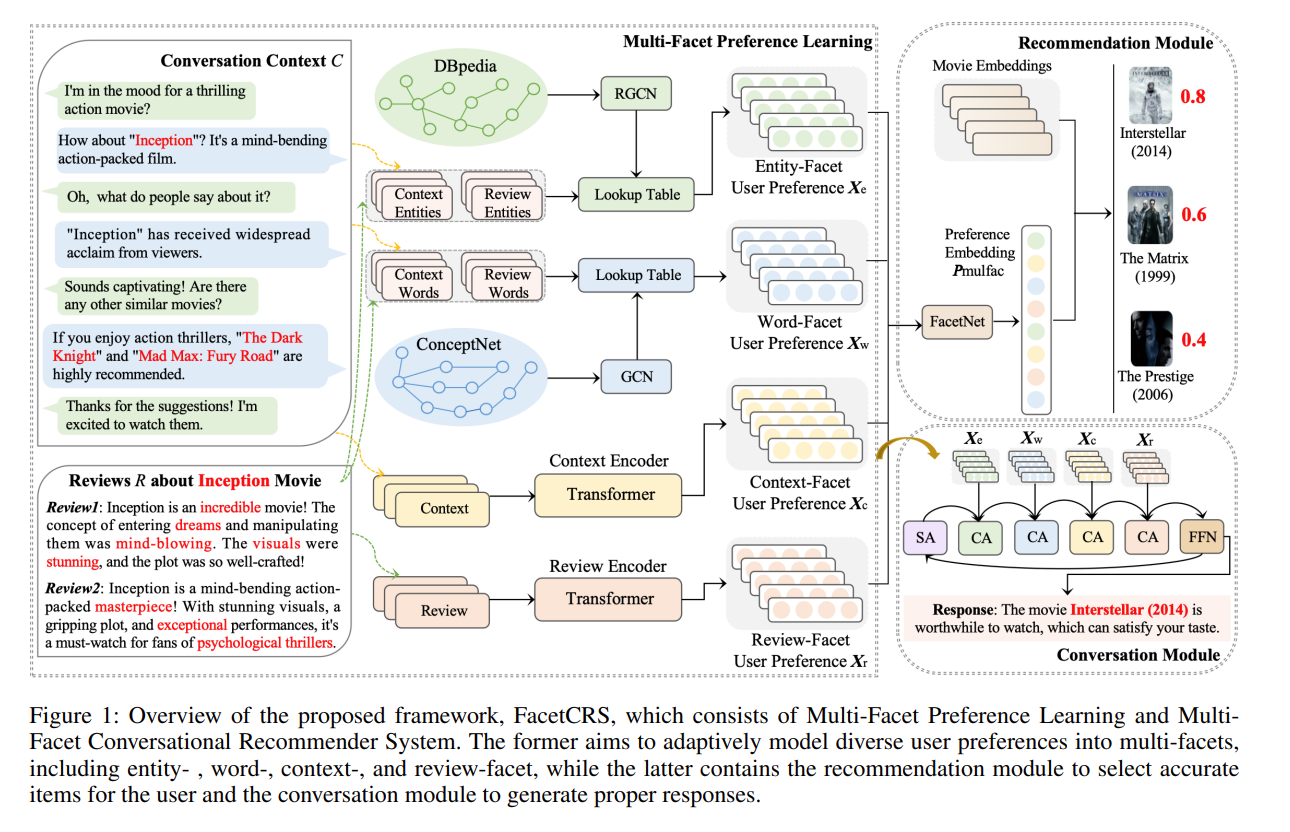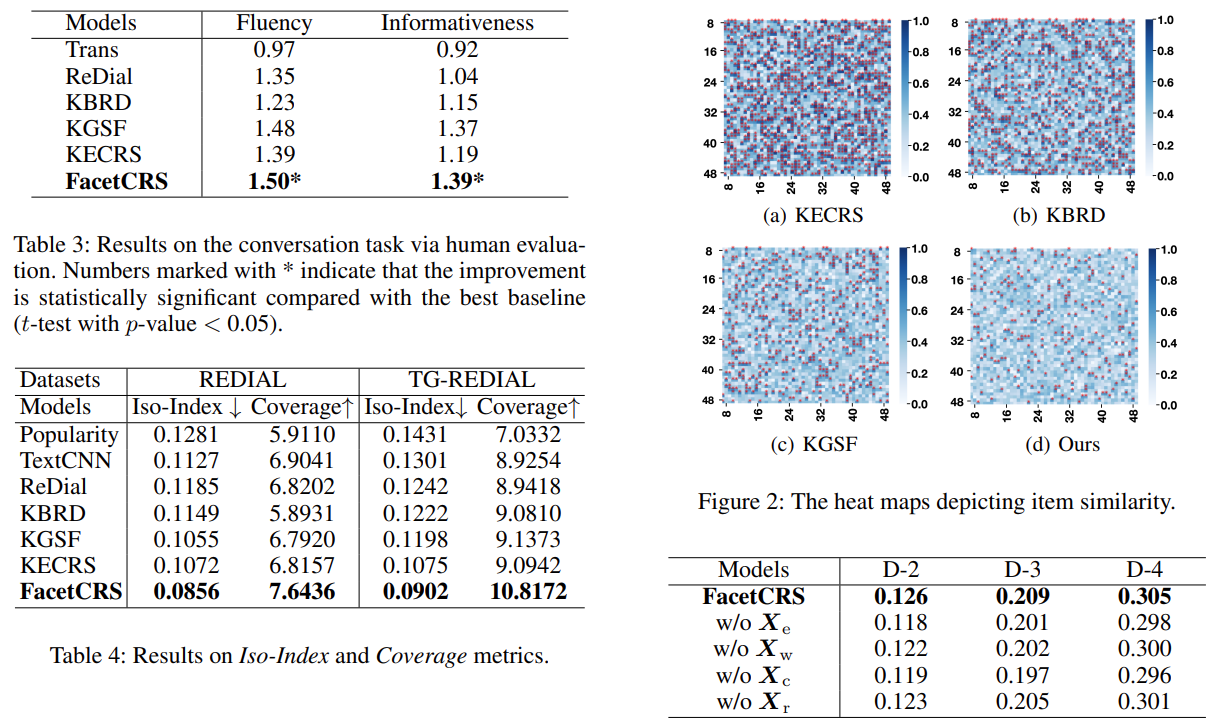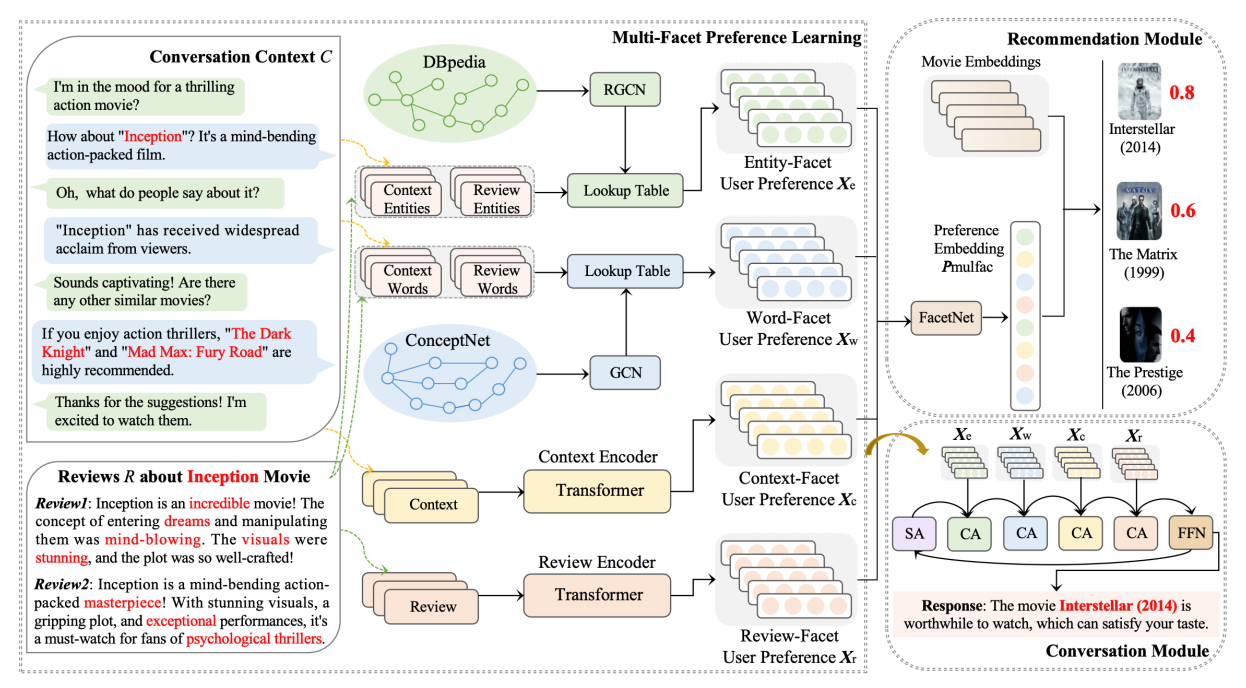Abstract
The flter bubble is a notorious issue in Recommender Systems (RSs), which describes the phenomenon whereby users are exposed to a limited and narrow range of information or content that reinforces their existing dominant preferences and beliefs. This results in a lack of exposure to diverse and varied content. Many existing works have predominantly examined flter bubbles in static or relatively-static recommendation settings. However, flter bubbles will be continuously intensifed over time due to the feedback loop between the user and the system in the real-world online recommendation. To address these issues, we propose a novel paradigm, MultiFacet Preference Learning for Pricking Filter Bubbles in Conversational Recommender System (FacetCRS), which aims to burst flter bubbles in the conversational recommender system (CRS) through timely user-item interactions via natural language conversations. By considering diverse user preferences and intentions, FacetCRS automatically model user preference into multi-facets, including entity-, word-, context-, and review-facet, to capture diverse and dynamic user preferences to prick flter bubbles in the CRS. It is an end-to-end CRS framework to adaptively learn representations of various levels of preference facet and diverse types of external knowledge. Extensive experiments on two publicly available CRS-based datasets demonstrate that our proposed method achieves state-of-the-art performance in mitigating flter bubbles and enhancing recommendation quality in CRS.
Framework

Experiment

Conclusion
To prick flter bubbles in the CRS, we propose a novel framework FacetCRS, which models multi-faceted user preferences in the CRS, including entity-, word-, context-, and review-facet, to capture diverse user preferences to mitigate flter bubbles. Meanwhile, FacetCRS is an end-to-end framework to automatically learn representations of various levels of preference facet and diverse types of external knowledge. Through extensive experiments, our method consistently outperforms several competitive baselines, which demonstrate the effectiveness of our FacetCRS.
Acknowledgement
This work is supported in part by the National Key R&D Program of China under Grant No. 2021ZD0111601, National Natural Science Foundation of China (NSFC) under Grant No. 61836012, 62325605, U21A20470, 62206110, 62206314, GuangDong Basic and Applied Basic Research Foundation under Grant No. 2023A1515011374, 2022A1515011835, China Postdoctoral Science Foundation funded project under Grant No. 2021M703687.


